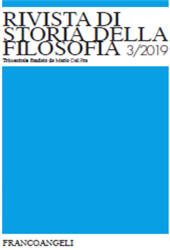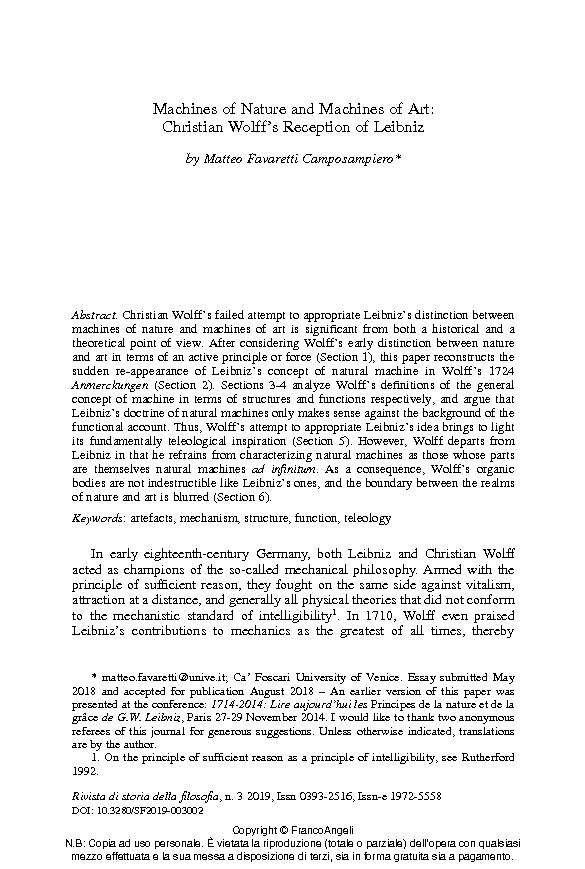Machines of Nature and Machines of Art : Christian Wolff's Reception of Leibniz
431-452 p.
Christian Wolff's failed attempt to appropriate Leibniz's distinction between machines of nature and machines of art is significant from both a historical and a theoretical point of view. After considering Wolff's early distinction between nature and art in terms of an active principle or force (Section 1), this paper reconstructs the sudden re-appearance of Leibniz's concept of natural machine in Wolff's 1724 Anmerckungen (Section 2). Sections 3-4 analyze Wolff's definitions of the general concept of machine in terms of structures and functions respectively, and argue that Leibniz's doctrine of natural machines only makes sense against the background of the functional account. Thus, Wolff's attempt to appropriate Leibniz's idea brings to light its fundamentally teleological inspiration (Section 5). However, Wolff departs from Leibniz in that he refrains from characterizing natural machines as those whose parts are themselves natural machines ad infinitum.
As a consequence, Wolff's organic bodies are not indestructible like Leibniz's ones, and the boundary between the realms of nature and art is blurred (Section 6). [Publisher's text]
-
Articles from the same issue (available individually)
-
Information
ISSN: 1972-5558
KEYWORDS
- Artefacts, mechanism, structure, function, teleology



